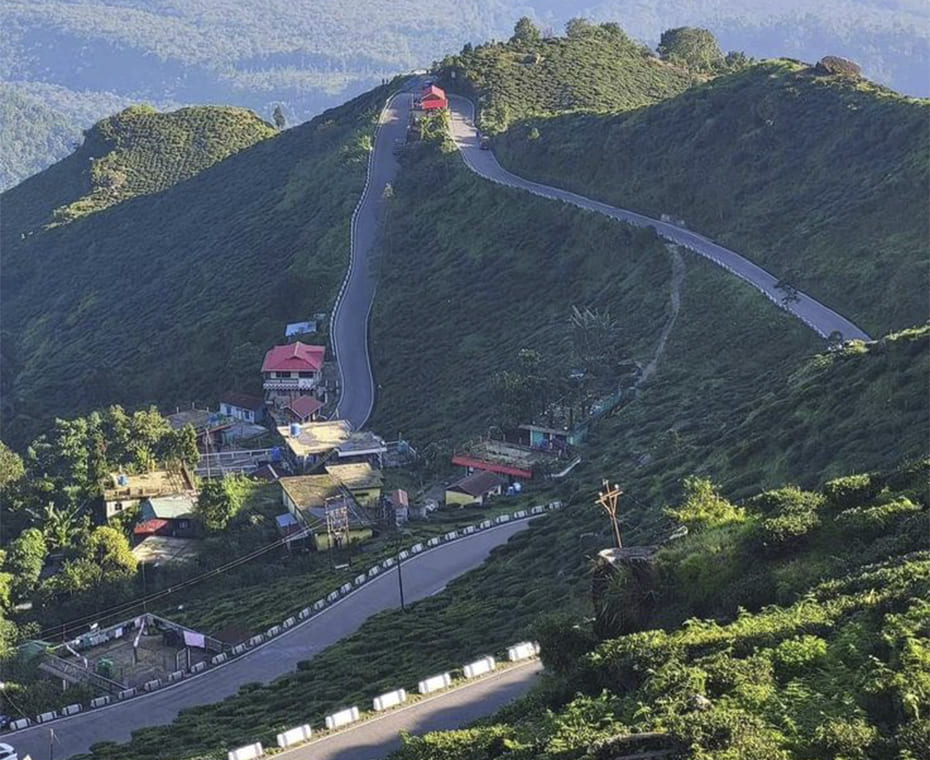




DAY 01 : ARRIVE DELHI
Arrive Delhi, the capital city of India. Upon arrival, you will be met by our representative at the Indira Gandhi International Airport and transfer to your hotel.
Rest of the day at lesiure.
Overnight at the hotel
DAY 02 : DELHI
Today proceed for your sightseeing and visit the Qutab Minar, a fine example of Indo-Islamic architecture and a minaret that forms part of the Qutb complex, a UNESCO World Heritage Site.
Later proceed to visit Gurudwara Bangla Sahib
Gurudwara Bangla Sahib – Built in the memory of the 8th Sikh Guru Sri Harkishen Sahib, Gurdwara Bangla Sahib is one of the important historical Gurdwara in Delhi.
Thereafter proceed to visit the majestic Red Fort spread over an area of 2 km and also have a secrete 300 years old bazaar “market” inside,a long passage way that contains a bazaar and is set within an arched passage.
Then visit India’s largest mosque - Jama Masjid, travel through the bustling market and take a cycle Rickshaw ride through narrow alleys and lanes in Chandni Chowk. Apart from all this you will also get opportunity to enjoy a walking tour with your guide through the largest spice market in Asia called Khari Baoli along with some local area, return to hotel and rest of the day free for personal activities.
Overnight at the hotel.
DAY 03 : DELHI – AGRA (210 Km / 4.5 hours)
Today discover the Humayun’s Tomb is the tomb of the Mughal Emperor Humayun in Delhi, India. The Tomb was commissioned by Humayun's first wife.
Later drive to Agra and upon arrival check in at your hotel.
This evening witness the surreal views of the Taj Mahal at sunset. Step inside this eternal symbol of love and appreciate the intricate designs and symmetries that rhyme as a poem written in marble. Taj Mahal is an extravagant display of love, built by Shah Jahan in memory of his beloved wife Mumtaz Mahal, later drive back to hotel and have breakfast at leisure
Overnight at the hotel.
DAY 04 : AGRA – FATEHPUR SIKRI – JAIPUR (240 Km / 7.5 hours including sightseeing)
Today, post breakfast start your day a bit early this morning and visit the splendid Agra Fort built in red sandstone, encapsulating magnificent palaces, halls of public, private audience & beautiful gardens.
Therafter from there proceed on your drive towards Jaipur en-route visiting Fatehpur Sikri.
Fatehpur Sikri is the deserted capital of Emperor Akbar roughly 35 km outside Agra. This city was built in the 16th century and was abandoned a few years later due to the paucity of water. The entire city is still intact, and the sight of this city is worth remembering.
Upon arrival at Jaipur, check-in your hotel.
Jaipur - land of the Rajput’s. Jaipur is the capital of Rajasthan, and is known as the “Pink City” because of the pink-tinted constructions in the old city. Recently the walled city of Jaipur has joined the elite list of UNESCO World Heritage Sites.
Overnight at the hotel.
DAY 05 : JAIPUR
After breakfast, proceed to city tour of Jaipur and Amber. Sightseeing includes Amber Fort, Fort is located 11 km away from Jaipur. Amber was once the ancient capital of Jaipur. The Fort is an excellent illustration of Rajput architecture, impressively situated on a hillside facing lake Mahota.
Visit Anokhi Museum (Closed on Monday) – is a highly successful textile company which, from its beginnings almost 40 years ago, helped resurrect languishing Rajasthani block printing textile Industry. In this beautifully restored Haveli, which won a UNESCO prize for restoration, you can admire textile traditions that the company has helped preserve. (Anokhi museum and Café are closed on Mondays and major national & local holidays and for exhibition changeover and maintenance of the galleries)
Drive past Hawa Mahal (Palace of Winds) constructed by Maharaja Sawai Pratap Singh in 1799, the Hawa Mahal is one of Jaipur’s main landmarks.
Later continue to City Palace: The City Palace is still the dwelling of the former royalty H.H Bhawani Singh Ji of Jaipur. This palace museum has an extensive collection of art, carpets and old weapons. Jantar Mantar (Observatory): It was built by Maharaja Jai Singh in 1728.
Jantar Mantar appears to be an inquisitive collection of sculptures but in fact, each construction has a detailed purpose such as measuring the positions of stars, altitudes, and azimuths and calculating eclipses. The most striking instrument is the sundial which is the 27-meter-tall gnomon.
Rest of the day free. You can also plan for Bazaar “Local Market" to explore the crafts such as semi-precious jewels, pottery, colorful embroidered fabrics with mirror work, woven carpets etc – watch artisans at work and enjoy souvenir shopping in this colorful city of Jaipur.
Overnight at the hotel.
DAY 06 : JAIPUR – BAGDOGRA (By Flight) – DARJEELING (95 Km / 3.5 hours)
After breakfast, in time transfer to Jaipur Airport to board flight for Bagdogra.
On arrival at Bagdogra airport, transfer by road to Darjeeling.
Standing high in the Himalayas at an altitude of 2134m, ‘Dorje Ling’, or place of the Thunderbolt, offers breathtaking views of snow-capped mountain peaks, with the Kanchendzonga rising higher than all the others. Darjeeling remains one of the most exotic destinations. Graeme Westlake in his book ‘ An introduction to hill stations on India’ refers to Darjeeling as having “A view Scarcely Unrivalled on Earth”.
Rest of the day at leisure to explore the place on your feet.
Overnight at the hotel.
DAY 07 : DARJEELING
Early morning visit Tiger Hill and Ghoom Monastery.
Tiger Hill is 13 kms from Darjeeling and one can see beautiful sunrise and Himalayan Range like Kanchandzonga , Mount Everest etc. One can see the horizon changing colors just before sunrise and then the entire Himalayan range turn golden. It is truly a majestic sight.
Ghoom Monastery is oldest Monastery in the area which was built in 1875 and one can see the image of Mythey Buddha 15ft. height on the way back from Tiger Hill.
After breakfast proceed to the Darjeeling Railway station to enjoy World Heritage Toy Train ride up to Ghoom.(Subject to operation of this train & availability of the seats)
The spectacular landscape unfolds as the 2-foot gauge Darjeeling Himalayan railway, opened in 1881, labours at about 10 mph criss-crossing the road. It has tiny 4-wheel locomotives (some over 100 years old) like living legends. One can experience the sound, smell and romance of a bygone era.
Return to the hotel for lunch and Later proceed for city tour.
Himalayan Mountaineering Institute/Padmaja Naidu Himalayan Zoological Park – (Closed on Thursday) The HimalayanMountaineering Institute was started in Darjeeling when Tenzing Norgay climbed Everest to give training to learn Mountaineering and other adventure sports related to mountaineering and in that Institute one can see equipment etc.
Himalayan Zoological Park where one can see Himalayan animals like Snow Leopard, Tibetan Wolf, Tibetan Yak, Himalayan Black Bear and several varieties of birds.
Tibetan Self- Help Centre Or Refugee Centre:- (Closed on Sunday) This institute is run by Tibetan Refugees to preserve their handicrafts and one can see making of Tibetan Carpets, Leather work, Paintings and Wooden work etc.
Overnight at the hotel
DAY 08 : DARJEELING – PELLING (123 Km / 06 hours)
Morning after breakfast, transfer by road to Pelling.
Located at a distance of 120 km from Gangtok Pelling is another serene, mountain village which lies in the western districts of Sikkim. This village is situated at an altitude of 2000 Meters (approx).
Afternoon visit Pemeyangste Monastery.
The Perfect Sublime Lotus, perched on a wooded hilltop, commands the most sublime view of the Khangchendzong. Built during the late 17th century, it is one of the oldest and most important monasteries of the Nyingmapa order of Buddhism in Sikkim.
Pemayangtse monastery follows the Mindroling tradition besides holding the lineage of LhatsunChenpo. Mindroling monastery was founded by Minling Terchen Gyurme Dorje whose famous daughter Jetsun Migyur Paldon lived near Pemayangtse and taught there during her exile.
Rabdentse, Sikkim’s second capital. The ruins of Rabdantse are worth exploring. The winding track through the forest brings you to a small set of ruins of the early town and eventually on the ruins of the palace with Chorten (stupa) nearby.
Overnight at the hotel
DAY 09 : PELLING – GANGTOK (127 Km / 6 hours)
Before breakfast – Hike to Sangacholing Monastery & back. It takes one way 40 minutes.
Breakfast at the hotel and then drive to Gangtok.
At an altitude of 1750m, Gangtok became the state capital in the mid 19th century and has undergone rapid development since then.The downtown area is dominated by huge government buildings decorated with traditional Buddhist symbols. Gangtok is also a resting ground for people traveling to North Sikkim. Surrounded by Monasteries and Orchids.
Overnight at the hotel
DAY 10 : GANGTOK
In the morning, visit the Phodong Monastery, which rises not far from the Tista Valley, in a grandiose landscape. It belongs to the Nyingma-pa sect, and its remarkable decoration includes, among other things, scenes depicting Buddhist hell.
Back in Gangtok, the capital of Sikkim & visit Rumtek monastery which is undoubtedly one of the richest in Sikkim.
Afternoon discover the Institute of Tibetology which contains very beautiful painted canvases, the Thanka then the chorten which rises to the north of the city.
Short visit to the Enchey Monastery founded by Saint DrupthupKarpa during a mystical flight.
Arts and Crafts Center was established to promote traditional Sikkimese arts and crafts. Exquisite wooden friezes, intricate bamboo work, as well as beautiful hand-woven rugs and hand-woven fabrics are featured here.
Overnight at the hotel
DAY 11 : GANGTOK – KALIMPONG (80 Km / 03 hours)
Post breakfast, transfer by road to Kalimpong
At an altitude of 1250m, Kalimpong’s location is ideal for a pleasant , relaxed getaway. Its clement weather has made Kalimpong’s orchids and gladiole well renowned.
Afternoon city tour of Kalimpong.
Flower Nurseries: The climate of Kalimpong is ideal for the cultivation of flowers and plants. Kalimpong is famous for its nurseries which export exotice flowers like Amaryllis lilies, Anthuriums, Roses gerberas, Dahilias, Gladiolias as well as Orchids and Cacti.
Zang Dog Palri Fo-Brang Monastery – This is a fairly new monastery located in Durpin Dara, from here one can get an exclusive panoramic view of the town and surroundings. The prayer room inside the monastery is adorned with wall paintings and there is a rare three-dimensional mandala upstairs.
Tharpa Choling Monastery at Tirpai hill on route to Dr.Graham’s Home belongs to the Yellow Hat sect of Lamas to which the present Dalai Lama belongs.
Thongsa Gumpa: this monastery is of Bhutanese origin and built around 1692. It is the oldest in Kalimpong.The original structure was destroyed in the inter-clan wars before the British arrived
Overnight at the hotel
DAY 12 : KALIMPONG / BAGDOGRA (85 Km / 03 hours) – KOLKATA (By Flight)/ DEPART KOLKATA
Morning in time transfer to Bagdogra airport to board flight for Kolkata.
On arrival, further connect with flight for onward destinations.